The families living in modern day slums
- Published
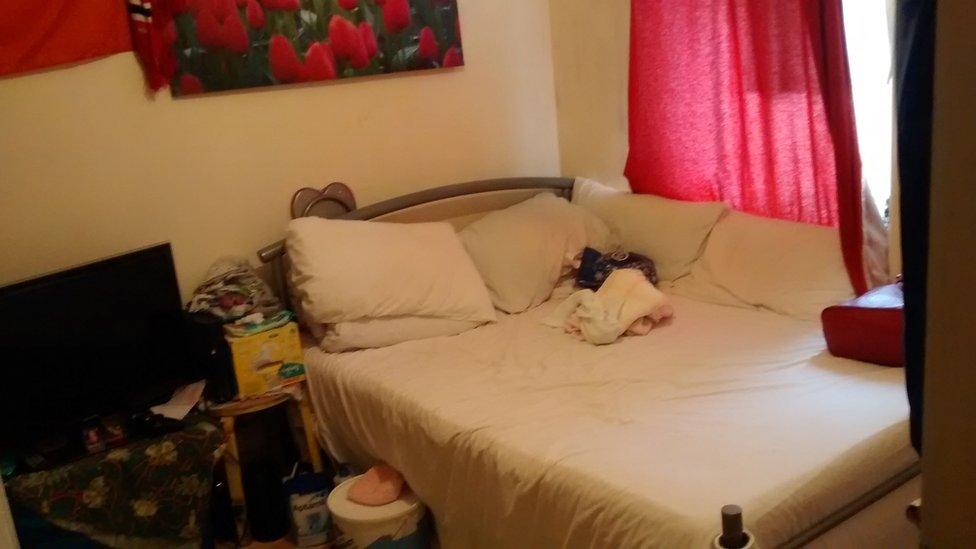
No room to play... Emadlina and her three children lived in this room
Poor children are being crammed into slum-land bedsits, some of which are so risky that some families end up being referred to social services for help, charities say.
Whole families are living in single rooms in shared properties, where strangers are coming and going.
Some are renting from private landlords, while others - recently made homeless - are placed in temporary accommodation by local councils, trying to meet their obligations amid the housing crisis.
"Call it a slum, call it what you like," says Kim Steward, an outreach worker with charity School-Home Support, "lots of families live like this and it's not safe."
The charity, which supports struggling families in London and south-east England, says it is increasingly having to step in to prevent families placed in risky housing from facing danger.
Mitcham and Morden MP Siobhain McDonagh is bringing the "dangerous" conditions of some temporary housing to the attention of the House of Commons on Tuesday.
She will be highlighting the living quarters of homeless families placed in a converted office block in the middle of a working industrial estate in south London.
Photographs show cramped rooms, packed full of family possessions, and unsanitary communal areas, featuring broken-down white goods, with few safe places to play.
Some 200 children, and their families, have been placed at Connect House in Mitcham by one of four local authorities. The MP says they are at risk from lorries and heavy machinery moving around neighbouring businesses.
'No place to play'
Mrs McDonagh describes it as "an accident waiting to happen", with rooms costing between £30 and £40 a night.
A spokesman for managing agents Easy Lettings said the housing had been licensed by Merton Council, and three other councils, for temporary housing and meets all the regulations.
"Many of these people cannot be provided for by the normal housing market for all sorts of reasons," he said.
"The rooms are not huge but they are well cared for.
"I know this is not ideal accommodation, but it is temporary, it is emergency accommodation and the landlord doesn't require a deposit and often people leave without paying anything."
He added that the councils who had licensed it visited it frequently.
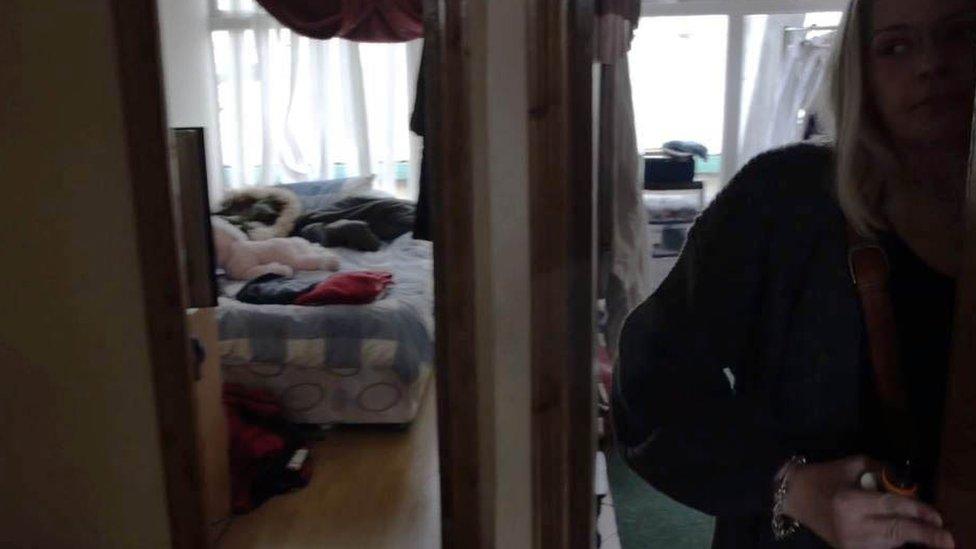
Families are squashed into very small living spaces
But a spokesman for Merton Council said it was seeking advice about what legal steps it can use to improve the conditions of people living at Connect House.
It said it had only six households living at the building.
Croydon Council said the housing met required standards, but it is working with other councils to improve conditions there.
The picture is not much different in east London, where family support worker Kim was asked to step in and support a mother and her three children facing dangers of a different sort.
Emadlina and her children, whose surname we have not used, were practically confined to a tiny room in a shared house in east London for four years. It was no wonder the children were struggling at school.
The living space consisted of a double bed, with a small walkway about a foot or so wide around it, and a wardrobe, a fridge and a microwave jammed in a corner.
"All we could ever do was sit on the bed," Emadlina recalled. "There was no other place to sit. There was no place to play."
Her room was one of seven bedsits in the former three-bedroom house. Each had four or five people to a room.
Some were families and some were men who were in east London to work, but everyone in the house shared the same bathroom and kitchen.
"It wasn't safe. There were people coming and going all the time and when they drank they would fight," said Emadlina.
"The children had to be with me all the time. It was very intense and very frightening. I would dread having to go back inside the house."
Uncertainty
After battling for several months, Kim managed to get the family moved to a self-contained two-bedroom flat classed as temporary accommodation, only to find the council planned to move a man and his child in to share the property.
"I called the council and said 'it's another safeguarding risk and I am not having it', " said Kim, who had pursued her case doggedly at every stage.
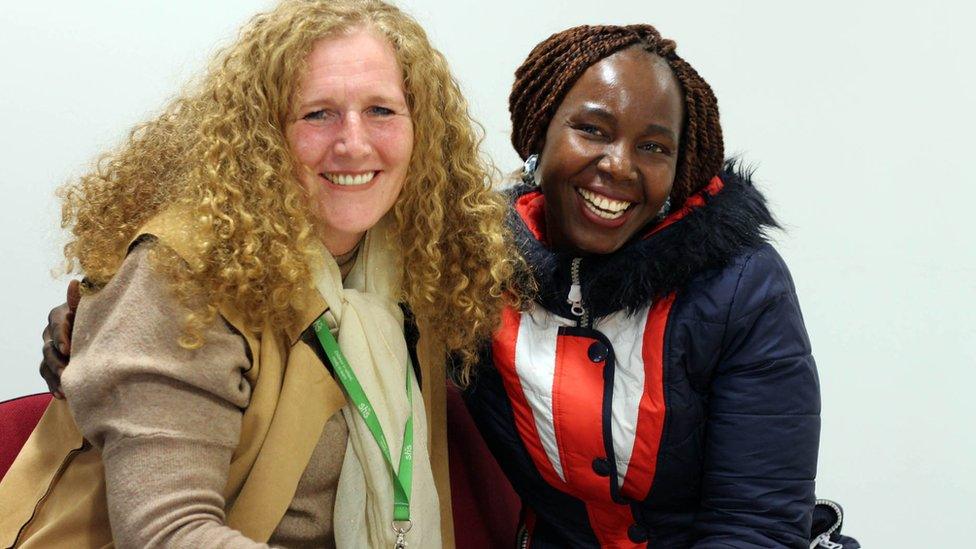
Escape from squalor: Kim fought Emadlina's case with determination
She called a contact at the housing department which led to Emadlina being moved a month later to a property on the outskirts of London.
Although they are now safe, it is nonetheless a temporary arrangement, and the family have the uncertainty of knowing they could be moved at any time.
They are also at least an hour away from the children's primary school.
Concerns are growing about councils using poor privately-owned accommodation, whether it's bedsits, hostels, or other properties used to house needy families because of a lack of social housing.
There are 78,180 households in temporary accommodation in England, including more than 120,000 children and the numbers are rising. These figures do not take into account those renting directly from private landlords.
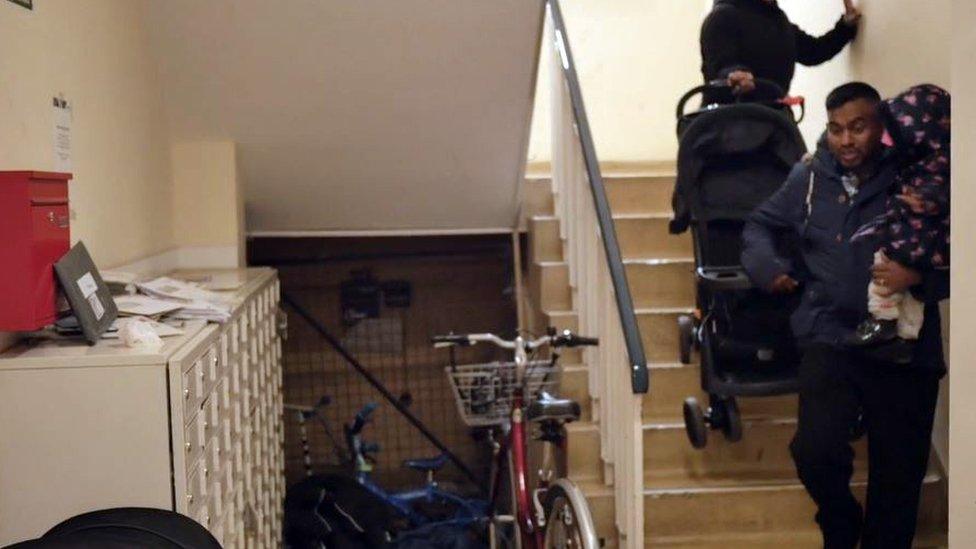
Some of the properties used are not designed for residential use
A Department for Communities and Local Government spokesman said: "In 2011 we took action and changed the law so that councils can place families in decent and affordable private rented homes so they can move into settled accommodation more quickly."
It has also allocated £950m to reduce homelessness and is bringing in reforms to ensure more people get the help they need to prevent them from becoming homeless.
School-Home Support's safeguarding manager Daniel Jarrett says the issue of poor housing has fuelled the number of safeguarding cases his charity has dealt with in the past year.
He said: "Children can be living in unsuitable places for months at a time or even longer.
"If the concerns are so great, it may need to be referred for a social work intervention and this could lead to a children in need plan or child protection plan."
Enver Solomon, director of external affairs at National Children's Bureau, said: "Because the system is overstretched, housing concerns are not normally seen as a child safeguarding issue by social workers.
"They are just seen as one of a number of contributing factors, but I would say they really need to be taken into account. The guidance is clear on what the impact of poor housing is on children."
Local children's safeguarding boards have also been probing the way temporary accommodation is being used for families around England in the wake of the Grenfell fire.
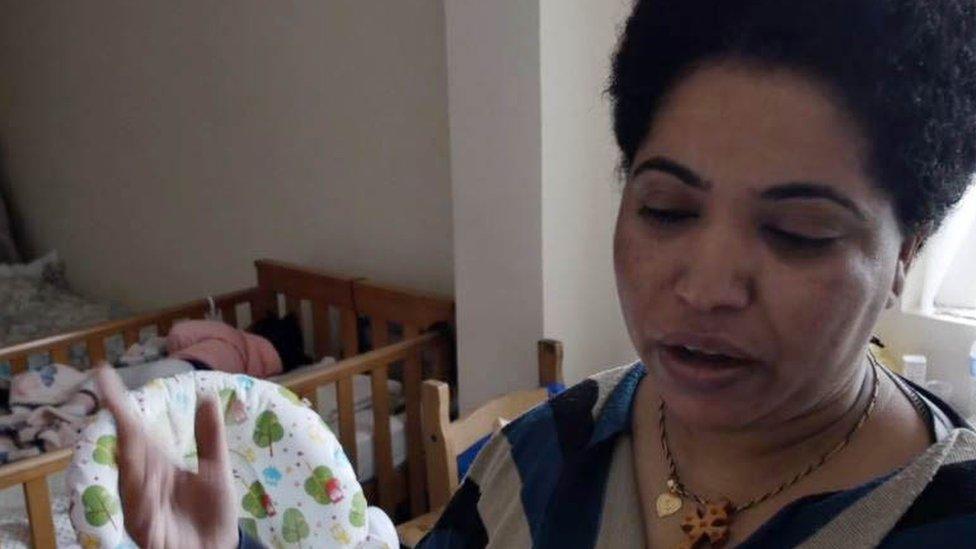
This mother says she cries every day at life in a single room with her baby
David Ashcroft, chairman of the association representing these boards, said his members had been asking questions of local councils, landlords and other agencies about the safety of accommodation used.
But Louise King, director of the Children's Rights Alliance for England, said many families are being placed in unsafe bed and breakfasts and hostels, which they sometimes share with recovering drug addicts and ex-prisoners.
She added that because many are staying there for far longer than the legal six-week limit, the situation was causing unnecessary safeguarding referrals.
"Living in these places can be very frightening for children. It can be very smelly, dirty and cold, and it could potentially be seen as neglect but actually it is the state who is putting children in these places," she said.
Last year the UN Committee on the Rights of the Child urged the government to take steps to guarantee all children stable access to adequate housing.

This resident sleeps in the day so her daughter can have the bed at night
Mrs McDonagh wants local councils to ensure that all temporary accommodation meets a minimum standard and that records are kept on those housed in such places.
Councillor Martin Tett, the Local Government Association's housing spokesman, said a healthy home was essential for children's physical safety, emotional stability, and mental health and that councils strive to ensure that housing is appropriate for families.
"But when councils are having to house the equivalent of an extra secondary school's worth of pupils every month, and the net cost for councils of funding temporary accommodation has tripled in the last three years, it's clear the current situation is unsustainable for councils, and disruptive for families."
It urged the government to take steps to adapt welfare reforms to ensure housing remains affordable for low-income families.